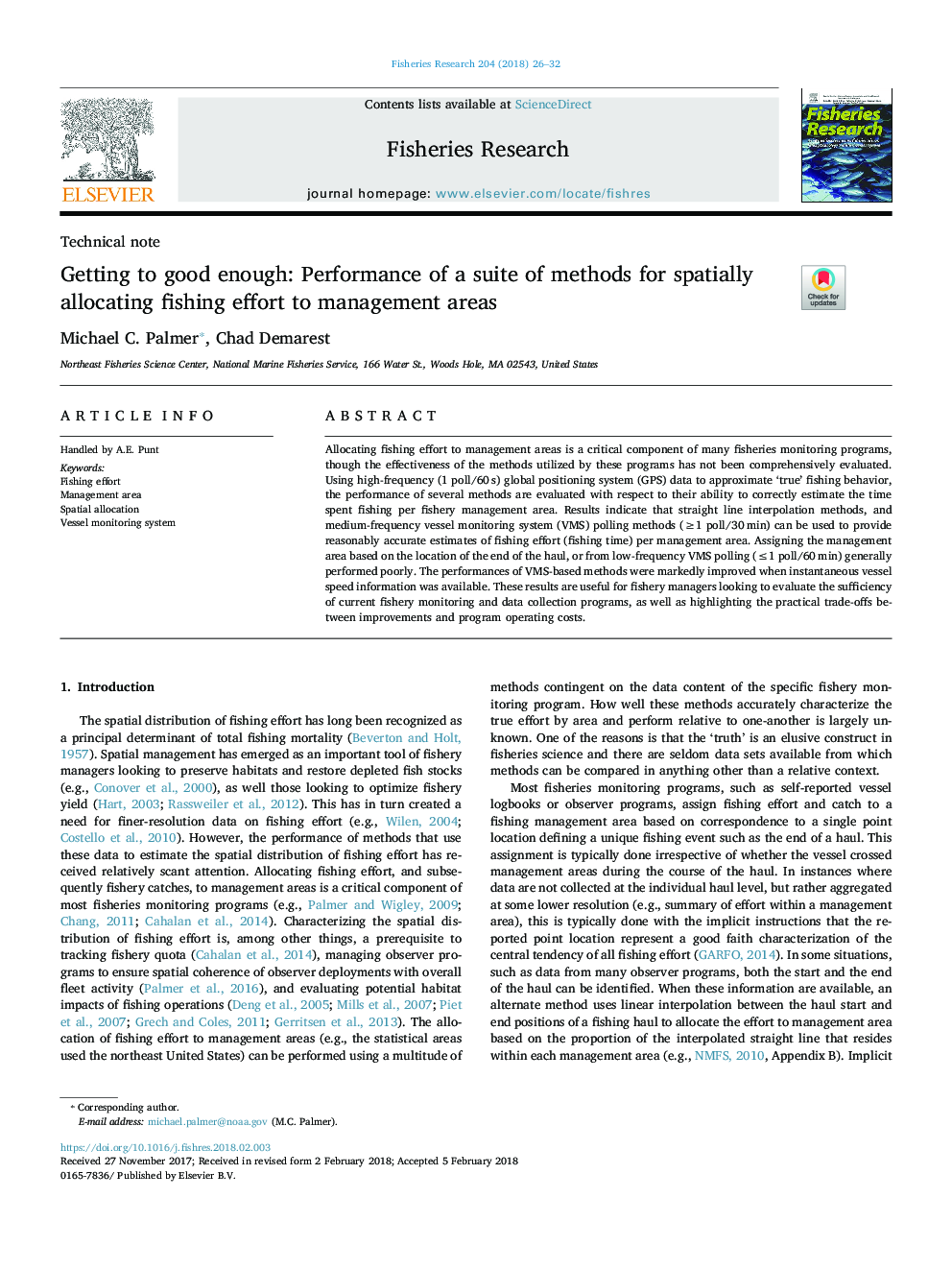| Article ID | Journal | Published Year | Pages | File Type |
|---|---|---|---|---|
| 8885344 | Fisheries Research | 2018 | 7 Pages |
Abstract
Allocating fishing effort to management areas is a critical component of many fisheries monitoring programs, though the effectiveness of the methods utilized by these programs has not been comprehensively evaluated. Using high-frequency (1 poll/60â¯s) global positioning system (GPS) data to approximate 'true' fishing behavior, the performance of several methods are evaluated with respect to their ability to correctly estimate the time spent fishing per fishery management area. Results indicate that straight line interpolation methods, and medium-frequency vessel monitoring system (VMS) polling methods (â¥1 poll/30â¯min) can be used to provide reasonably accurate estimates of fishing effort (fishing time) per management area. Assigning the management area based on the location of the end of the haul, or from low-frequency VMS polling (â¤1 poll/60â¯min) generally performed poorly. The performances of VMS-based methods were markedly improved when instantaneous vessel speed information was available. These results are useful for fishery managers looking to evaluate the sufficiency of current fishery monitoring and data collection programs, as well as highlighting the practical trade-offs between improvements and program operating costs.
Related Topics
Life Sciences
Agricultural and Biological Sciences
Aquatic Science
Authors
Michael C. Palmer, Chad Demarest,
